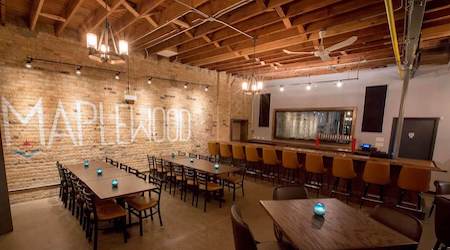
Chicago Breweries Prepare for COVID Winter with HVAC Upgrades
October 22, 2020
Many restaurants, bars, and breweries are facing the long, cold “Covid Winter” with a sense of existential dread. In many locales, officials are requiring occupancy to be reduced, and many customers are still skeptical of spending extended periods indoors with strangers. So anything these businesses can do to make themselves more attractive to drinkers and diners could be the difference in whether these businesses are still around come spring.
Two Chicago breweries have invested in some important HVAC upgrades to show customers they are serious about the health and safety of their customers and staff. These upgrades can also serve as models for other similar businesses looking for a similar way to address coronavirus concerns this winter.
Maplewood Brewery & Distillery in Chicago’s Logan Square neighborhood recently underwent renovations, including some HVAC upgrades, according to an Instagram post. The brewery added “additional fresh air intakes and exhaust systems to achieve a minimum of 15 air changes per hour.” That number far exceeds ASHRAE guidelines even for healthcare spaces for ventilation rates. The brewery also is using MERV 13 filters, the ASHRAE-recommended level of filtration to capture viruses.
District Brew Yards, a multi-brewery and restaurant facility in Chicago’s West Town neighborhood, also is preparing for the health and safety of its customers and staff this winter. The relatively new facility added UV filtration to its HVAC system, which, as it says, “has been proven to significantly destroy many strains of viruses and bacteria from the air.”
While these important HVAC measures will no-doubt help slow the spread of the virus, the most important anti-coronavirus measure will still be up to patrons and staff: wearing masks. A whitepaper from Taylor Engineering about how effective upgrades to HVAC systems are against fighting coronavirus concluded that masks are still the single-most important mitigation measure.
This post was submitted by Greg Zimmerman, editor, Building Operating Management and FacilitiesNet.com.
Next
Read next on FacilitiesNet












